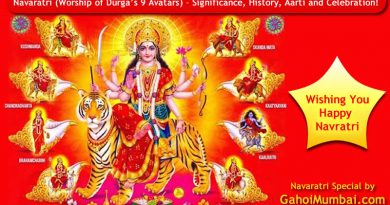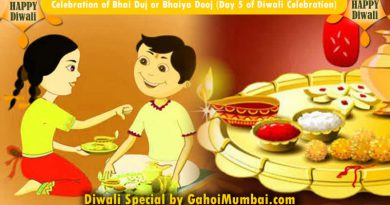About Kumbh Mela and Its Importance!
About Kumbh Mela, Its Importance And Visiting Sites In India!
Kumbh Mela – a divine dip in the holy river of Hindu importance.
Kumbh Mela is a divine occasion of taking bathe in a holy river associated with specific holy places like Haridwar (Ganges River), Ujjain (Shipra River), Nasik (Godavari River) and Prayag – Allahabad (Sangam – a confluence of the Ganges, Jamuna, and the mythical Sarasvati).
Kumbh Mela is a famous Hindu pilgrimage of belief in which Hindus gather to take dip in a holy river.
Kumbh Mela is also known as Kumbha Mela, In Hinduism, it is a religious festival that is celebrated four times every 12 years, the site of the observance rotating between four pilgrimage places on four sacred rivers such as at Haridwar on the Ganges River, at Ujjain on the Shipra, at Nasik on the Godavari, and at Prayag (Allahabad) at the confluence of the Ganges, Jamuna, and the mythical Sarasvati.
It is considered to be the biggest peaceful gathering in the world where around 100 million people were expected to visit during the last Maha Kumbh Mela in 2013 in Allahabad.
It is held every third year at one of the four places by rotation: Haridwar, Allahabad (Prayaga), Nashik and Ujjain. Accordingly the Kumbh Mela is held at each of these four places every twelfth year.
Ardha (“Half”) Kumbh Mela is held at only two places, Haridwar and Allahabad, every sixth year. The festival is publicized as the “world’s largest gathering of religious pilgrims”. There is no specific technique of determining the number of pilgrims, and the estimates of the number of pilgrims bathing on the most auspicious day may fluctuate; approximately 80 million people attended in last Kumbh Mela at Allahabad on 14 February 2013.
Mauni Amavasya usually attracted the largest crowds at the Mela, which held here every 12 years. The latest Kumbh Mela was held on 14 January 2013 at Allahabad. The day noticed the second and the largest Shahi Snanam (royal bath) on this occasion. 13 Akharas have participated at the Sangam Maha Kumbh. 10 Feb 2013 was the highest masses bathing day at the Maha Kumbh Mela and possibly the largest human congregation on a single day. Over 30 million devotees and ascetics took holy bathe on the occasion of Mauni Amavasya.
Kumbh Mela and its Hindu Mythology:
The term Kumbh Mela comes from Hindi, and in the original Sanskrit and other Indian languages it is generally known as Kumbha Mela. Kumbha means a pitcher (Jug type container) and Mela word defines fair (a gathering of masses for some religious or fun purpose) in Sanskrit. It is a holy Hindu pilgrimage which is held for about one and a half months at Haridwar, Allahabad (Prayaga), Nashik and Ujjain. Traditionally, it is believed in Hinduism that drops of nectar fell from the Kumbha (Pitcher) carried by gods after the sea was churned. Bathing in these rivers is believed to purify human being from their all sins.
Each specific place’s Kumbh Mela Celebration is based on specific zodiacal positions of the Sun, the Moon, and Jupiter, the divinest time occurring at the exact moment these zodiacal conditions are fulfilled. Bathing at this time is believed to obtain the highest religious significance, but the Kumbh time is regarded as being so holy that other bathing days are designated weeks or even months before and after this climactic time.
It is believed that the Kumbh Mela’s beginning to the 8th-century philosopher Shankara, who sought to make stronger Hindu religion by starting regular gatherings of educated ascetics for conversation and debate on Hindu religion. The fair’s most significant ancient figures have been the naga akhadas, militant ascetic orders whose members formerly made their living as mercenary soldiers and traders. These akhadas still dominate the divinest spots at each Kumbh’s most auspicious moment, and although the government now imposes an established bathing order, history records bloody arguments between groups fighting for superiority.
The Kumbh Mela witnesses visits of all sections of Hindu religious life, ranging from sadhus (blessed men), who remain naked year-round or practice the most severe physical discipline, to hermits, who leave their isolation only for these pilgrimages, and even to silk-clad teachers using the cutting-edge technology. The religious groups represented range from social-welfare societies to political activists. Huge crowds of believers, friends, and families join the individual ascetics and organizations, making the Kumbh Mela the world’s biggest religious gathering.
The legend of the Kumbh Mela – credited to the Puranas (collections of myth and legend) but not found in any of them—narrates how the gods and demons fought over the pot (kumbha) of amrita, the elixir of immortality produced by their joint churning of the milky ocean. During the struggle, drops of the elixir fell on the Mela’s four earthly sites, and the rivers are believed to turn back into that prehistoric nectar at the climactic moment of each Mela, giving pilgrims the chance to bathe in the essence of purity, auspiciousness, and immortality. The name Kumbh comes from this mythological pot of elixir but is also the name for Aquarius, the sign of the zodiac in which Jupiter resides during the Haridwar Mela.
Kumbh Mela and its Holy Places:
Divine Kumbh Mela takes place every twelve years at one of four holy cities as Allahabad, Haridwar, Ujjain and Nashik. The Mela in its different forms rotates between Prayag, Nashik, Ujjain and Haridwar every third year.
Kumbh Mela: Held at Allahabad, Haridwar, Ujjain and Nashik every three years.
Ardha Kumbh Mela: Held at Haridwar and Prayag every 6 years.
Purna Kumbh Mela: Held only at Prayag every 12 years.
Maha Kumbh Mela: Held only at Prayag every 144 years.
Kumbh Mela and its past and future venues:
Year Prayag Nashik Ujjain Haridwar
1983 Ardha Kumbh
1989 Purna Kumbh
1991 Kumbh
1992 Kumbh Ardha kumbh
1995 Ardha Kumbh
1998 Kumbh
2001 Purna Kumbh
2003 Kumbh
2004 Sihasth Ardha Kumbh
2007 Ardha Kumbh
2010 Kumbh
2013 Maha Kumbh
2015 Kumbh
2016 Sihasth Ardha Kumbh
2019 Ardha Kumbh
2022 Kumbh
Traditions, rituals and activities at Kumbh Mela:
The leading event of the Kumbh festival is ceremonial bathing at the banks of the river in whichever town Kumbh Mela being held:Ganga in Haridwar, Godavari in Nasik, Kshipra in Ujjain and Sangam (confluence of Ganga, Yamuna and mythical Saraswati) in Allahabad (Prayag).
Other accomplishments include spiritual discussions, religious singing, mass feeding of divine men and women and the poor, and spiritual get-togethers where doctrines are debated and standardised. Kumbh Mela is the most holy of all the pilgrimages. Generally, thousands of sacred men and women attend the divine Kumbh Mela – a part of Hindu Pilgrimage. The sadhus are seen dressed in saffron costume with Vibhuti ashes applied on their skin as per the requirements of primordial traditions. Some, called Naga Sanyasis, may not wear any clothes even in severe winter. The right to be naga, or naked, is considered a sign of separation from the material world and adoption of spiritual world.
Importance of Darshan at Kumbh Mela:
Darshan, or well-mannered visual exchange, is a significant part of the Kumbh Mela. People make the pilgrimage to the Kumbh Mela noticeably to see and experience both the religious and secular aspects of the event. Two major groups that gather in the Kumbh Mela include the Sadhus (Hindu divine men) and pilgrims. Through their constant yogic practices the Sadhus articulate the transitory aspect of life. Sadhus travel to the Kumbh Mela to give divine Darshan for the pilgrims. This allows members of the pilgrims to communicate with the Sadhus directly and to take “darshan.” They are able to “seek instruction or advice in their spiritual lives.”
Darshan emphases on the visual exchange, where there is communication with a religious deity and spiritual leaders. The Kumbh Mela is organized in camps that give Hindu participants access to the Sadhus. The Darshan is significant to the experience of the Kumbh Mela and because of this worshipers must be careful so as to not anger religious deities. Seeing of the Sandus is sensibly managed and congregations habitually donate money or other religious things at their feet.
Most auspicious days during the Kumbh Mela:
Holy Bhishma Ekadasi Snan:
As per beliefs, On the day known as Bhishma Ekadasi Snan, Bhishma Pithamaha, the eldest, wisest, most powerful and most righteous person belonging to the Kuru dynasty (approx. over 5000 years ago), described the greatness of Lord Krishna through Sri Vishnu Sahasranama to Yudhishtira, the eldest brother of Pandavas.
Forthcoming Kumbh Mela festivals:
Allahabad will host 2019 Ardh Kumbh.
Haridwar will be the venue for 2022.
If you need any help regarding Hindu Pilgrimage or Hindu Pilgrimage related information, please leave your message at our Pilgrimage Help Centre.
All this information is free and only for informational purpose.




